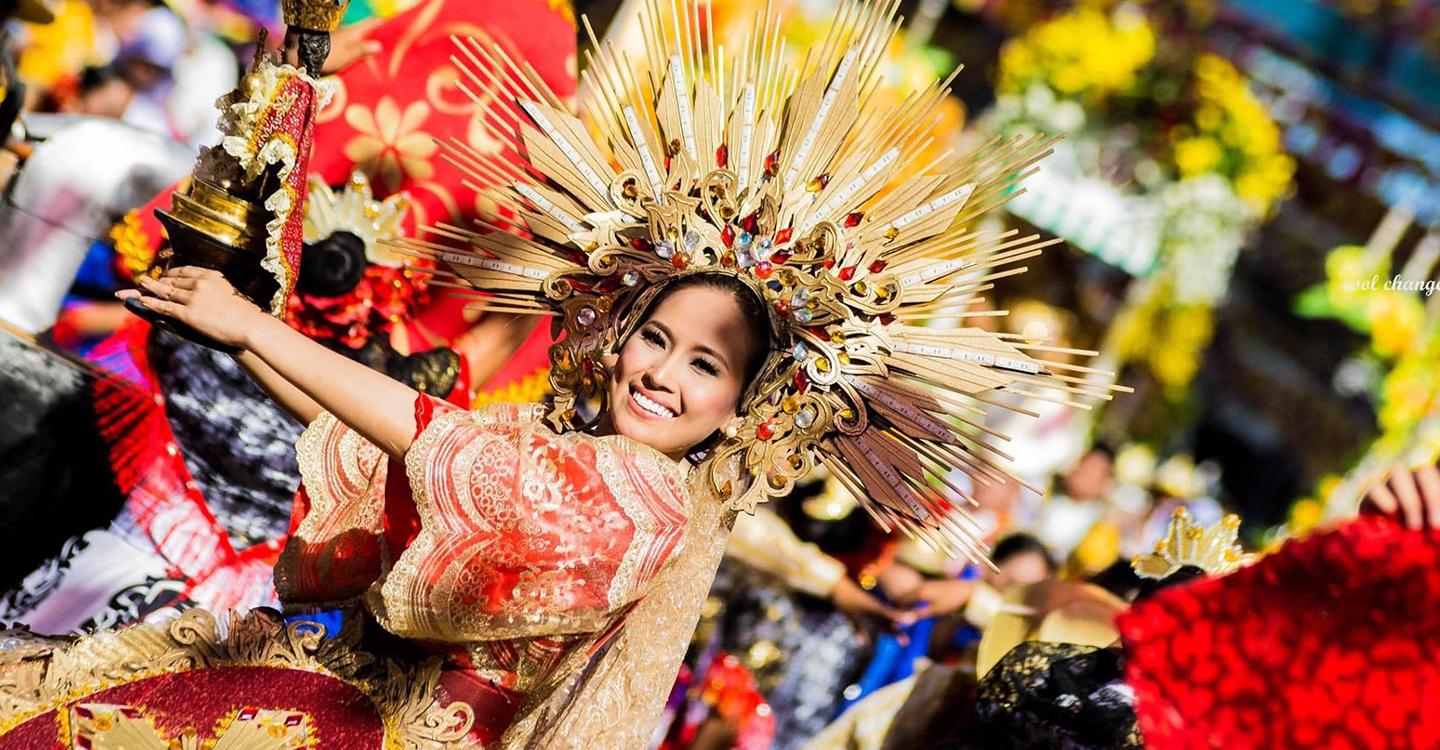Immerse yourself in the energetic and festive Sinulog Festival in Cebu, held every January. Uncover its origins and cultural significance. Discover further details about this distinctive tradition below.
The Sinulog Festival, also known as the Santo Niño Festival, is a revered yearly event in Cebu that seamlessly blends religious devotion with vibrant cultural celebrations. As one of the Philippines’ premier festivals, it is among the most renowned.
With a rich history dating back years, the Sinulog Festival has established itself as a cornerstone of Philippine cultural heritage. This festival not only captivates the local population but also beckons an impressive influx of 1 to 2 million visitors from all corners of the country each year. Beyond its spiritual significance, the festival has evolved into a spectacle that beckons travelers to engage with the heart of Cebu.
In essence, the Sinulog Festival transcends its status as a mere celebration. It has matured into a crossroads of cultures, an intersection of devotion and merriment that ignites the spirit of unity. As the festival’s rhythms and colors dance through the streets of Cebu, it unites people from diverse backgrounds under the banner of shared celebration.
History and Origin of Sinulog Festival
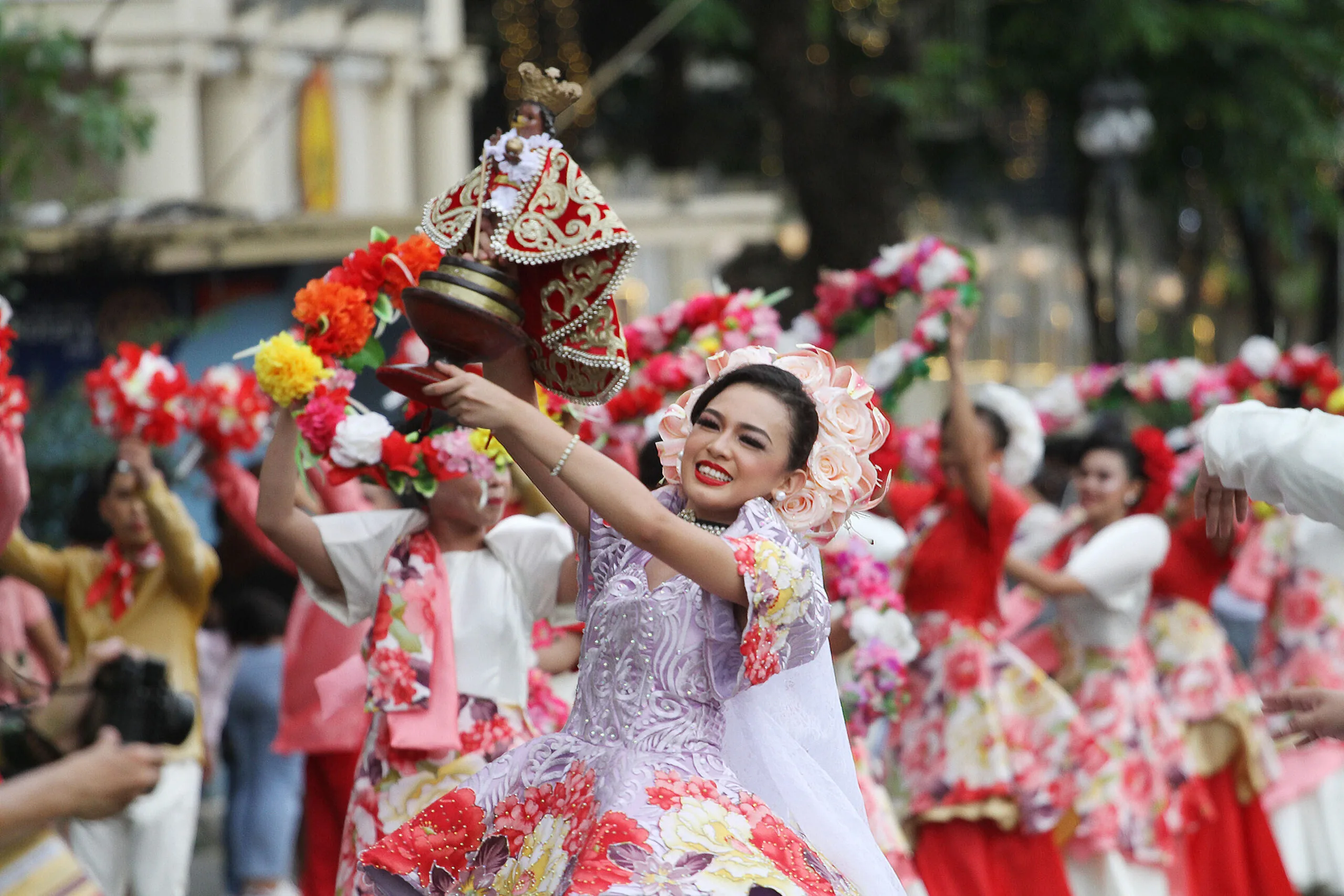
At the moment of receiving the sacred image, it is recounted that Queen Juana, the primary consort of Rajah Humabon, joyously engaged in a dance, cradling the image of the infant Jesus in her arms.
This excitement inspired other local people to follow in her footsteps, marking the beginning of what is now known as the Sinulog dance. As a result, this event laid the groundwork for countless variants of the Sinulog dance.
Baladhay, an advisor to Rajah Humabon, is also credited with inventing the Sinulog dance routines. During an illness, Humabon instructed that Baladhay be transported to a chamber where the Santo Niño was enshrined.
After a few days, the native tribe heard Baladhay shouting and discovered him dancing. Baladhay was confronted about why he was shouting and dancing. He pointed to the holy Jesus figure and said baby Jesus was tickling him.
Baladhay, in turn, danced with the little child, explaining that he was mimicking the movements of the river. Santo Nio worshippers still employ the two-step forward, one-step backward routine because they believe it was Santo Niño’s choice to have Baladhay dance.
What does SINULOG mean?
The phrase “Sinulog” derives from the Cebuano language, specifically from the word “sulog,” which refers to the “rhythmic movement of water currents.” This statement perfectly reflects the essence of the Sinulog dance, which is distinguished by its peculiar and captivating forward-backward stepping pattern.
When is the Sinulog Festival, and where is it celebrated?
The Sinulog Festival is celebrated on the third Sunday of January each year in Cebu City. This lively and culturally significant event is held across the city, with the primary focus of action centered around the Basilica Minore del Santo Nio and its surroundings. Cebu City, the capital of Cebu Province, is the center point of the Sinulog Festival.
Why is Sinulog celebrated?
The Sinulog Festival is observed in Cebu for 9 days in honour of Santo Niño (the Child Jesus), with the Sinulog Grand Parade traditionally beginning on the third Sunday of January. The famous parade also commemorates the Filipinos’ acceptance of Roman Catholicism (when the image of the Child Jesus was given to the king and queen of Cebu as a gift by Portuguese conquistador Ferdinand Magellan in 1521), thus transitioning from their previous pagan or animist beliefs.
‘Pit Senyor!’ mean
“Pit Senyor!” is a phrase commonly heard during the Sinulog Festival in Cebu. It is a Cebuano chant and greeting that expresses devotion and reverence to Santo Niño, the infant Jesus. The phrase is a shortened form of “Sangpit sa Senyor,” which translates to “Call to the Lord.” It’s a way for people to show their enthusiasm, faith, and participation in the festivities while honoring the Santo Niño.
Why is there a Sinulog Queen Festival dancing in front of a Sinulog parade?
Hara Amihan (Humanay, subsequently baptized as Queen Juana, the wife of Rajah Humabon, or the olden monarch of Cebu) is represented by the girl, who is clutching an icon of Sto. Because it was the baptismal gift handed up by the Portuguese adventurer, Ferdinand Magellan, when he came to Cebu, Nio dances during the Sinulog Festival Grand Parade.
Things you can expect and do during Sinulog Festival

- Join the Fluvial and Solemn Procession and “Kaplag”
Thousands of devotees participate in the Fluvial Parade and Solemn Procession of the image of Santo Nio, which is usually held a day before the Sinulog Grand Parade. The Fluvial Parade begins at 6 a.m., while the Solemn Procession takes place in the afternoon, around 2 p.m. It is frequently followed by the “kaplag,” in which students, actors, and actresses re-enact Queen Juana and Rajah Humabon’s Baptism as Catholics, including the moment when Magellan gave the Queen the image of the Santo Nio as a baptismal gift.

- Witness the Sinulog Grand Parade
The Sinulog Grand Parade begins at 8:30 a.m., following the Maanita and Pontifical Mass at the Basilica Minor Del Santo Nio and the Holy Mass at the Cebu City Sports Centre. This parade is one of the most magnificent events in the Philippines, with all participants displaying their beautiful dance movements to their ritual dances while dressed in colourful and intricate costumes. Join in the excitement and witness the colourful parade of Cebuanos honoring Santo Niño. Catch the Grand Parade at the end at 4 p.m., where organizers will announce the winners of the festival’s competitions.

- Street Parties and Live Bands
Street parties and live bands may be found in practically every corner of Cebu (particularly in the evenings) before and after the Sinulog Grand Parade.
So, dress comfortably, get some face paint, and prepare to gulp some beer! Most people just linger out on the streets, while others travel to spots like Mango Square, Baseline, or Fuente Osmea to party till the early hours of the morning.
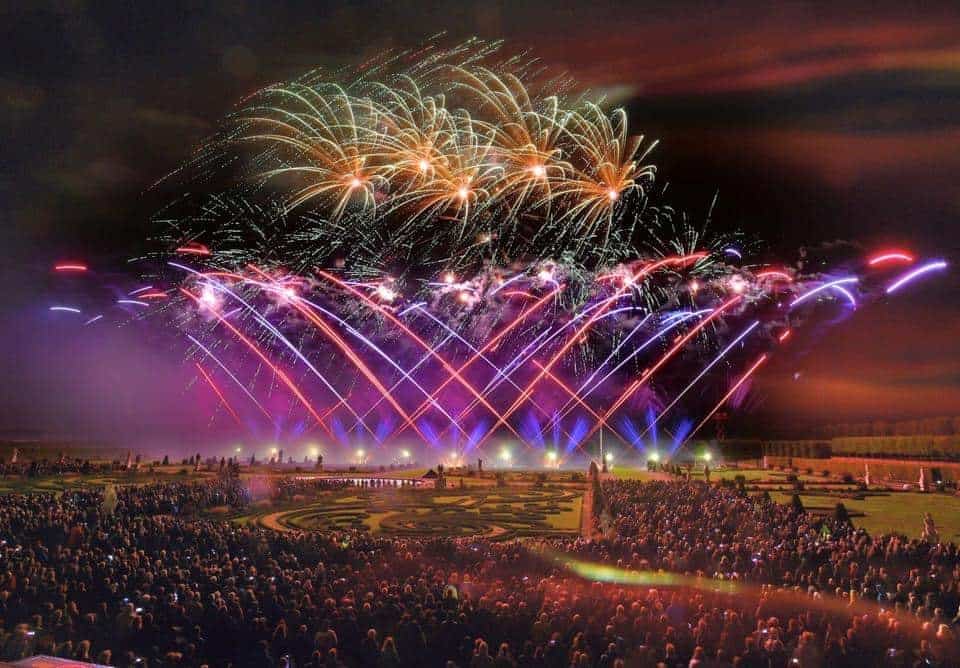
- Catch the Sinulog Fireworks!
Cebu City typically holds a stunning pyro performance to end the Sinulog Grand Parade with a ‘boom’! The colourful fireworks display is frequently held around 9 p.m. at the Cebu Business Park at Ayala Centre Cebu, and is currently maybe held at Nustar or SM Seaside as well. The better it will be if you can discover a way to stay at a Cebuano/Cebuana friend’s condo with a beautiful view of this area! Otherwise, you can have a magnificent view of this spectacular performance from the ground.
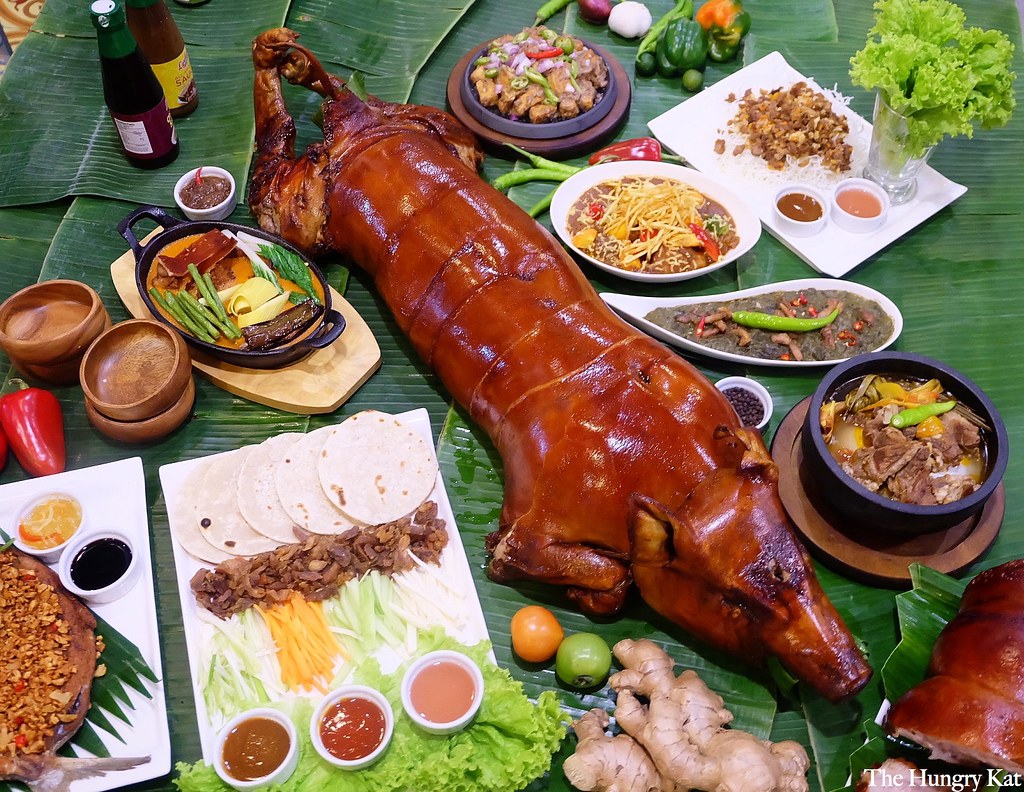
- Enjoying food stands and Cebuano cuisine
No festivity is complete unless you fill your stomach! And the best way to experience a place is to become immersed in its cuisine. Puso, or hanging rice (steamed rice wrapped in banana leaves), is a must-try for first-time visitors and can be found at practically every food stand in the city. Of course, the world-renowned Cebu Lechon (roasted pig) should not be overlooked.

- Go for a Night Walk
Joining the Sinulog Festival will require you to walk most of the day, as the main streets are packed with thousands of people at all times of the day. Enjoy the night by walking between neighbouring tourist attractions, saying a prayer, lighting a candle, or meeting other travelers.
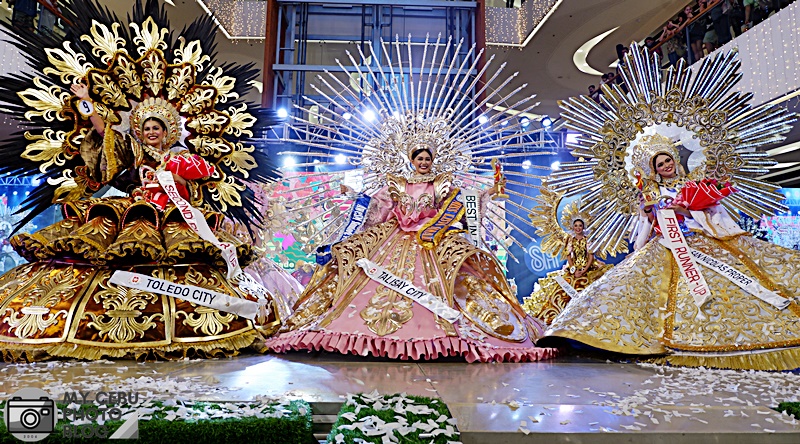
- Watch Sinulog Queen Festival Competition.
Witness the fusion of tradition and modernity as these talented queens showcase their talents and embody the spirit of this vibrant celebration. Join in the festivities and admire the stunning choreography and intricate costumes that make the Sinulog Queen Festival a truly mesmerizing spectacle.
Tips for joining Sinulog Festival
- Wear comfortable clothes and footwear. From the parades to the festivities, there will be a lot of walking and weaving through huge crowds. Furthermore, some roads surrounding the festival will be restricted to vehicles, forcing you to rely on your feet to get around. Wear breathable clothing and supportive shoes.
- Secure your valuables. Because of the expected large crowds during the festivities, you may want to bring only what is necessary. Bring only enough money to cover your day’s expenses, and you should be fine. While mobile phones are necessary, there may be service interruptions in numerous regions, so you may find yourself unable to use yours. The fewer valuables you have with you during Sinulog, the better.
- Arrange accommodations ahead. Ideally, as soon as August to September. Why? Remember that millions of people want to attend this every year, so it’s not surprising that most hotels are fully booked months in advance!
- Stay Vigilant. Because of the large number of people, minor theft is possible, so be aware of pickpockets. For example, instead of carrying a rucksack, choose bags that can be carried in front of your body.
- Bring only the essentials. You’ll be on the go, so only bring a compact bag with a few valuables: your phone and some cash.
- Let Loose. Be patient and have fun! It’s also usual for someone to abruptly hug you or spread paint or even water over your body or face. It’s all part of the adventure!
- Wear sunblock. Because you’ll be out in the sun a lot during the events, it’s important to take care of your skin.
- Bring water with you to avoid dehydration. It is fairly uncommon to hear about people passing out due to the heat and crowds during the festival. It’s advisable to carry a reusable tumbler or water bottle to reduce waste.


